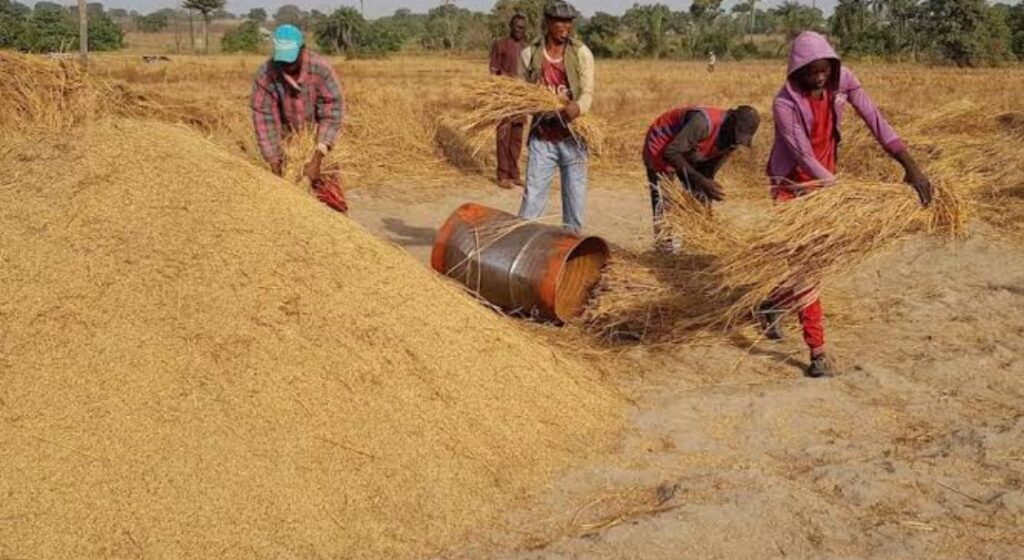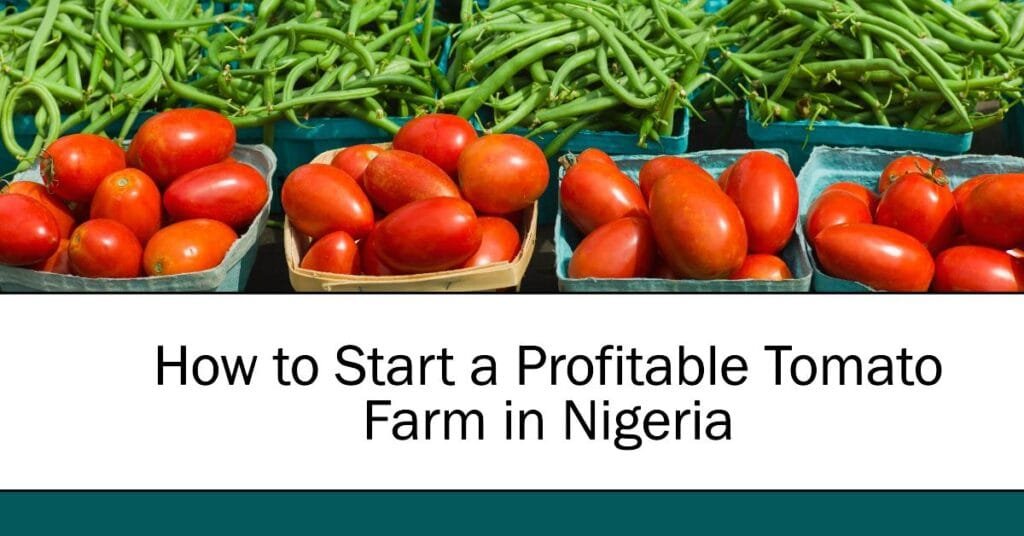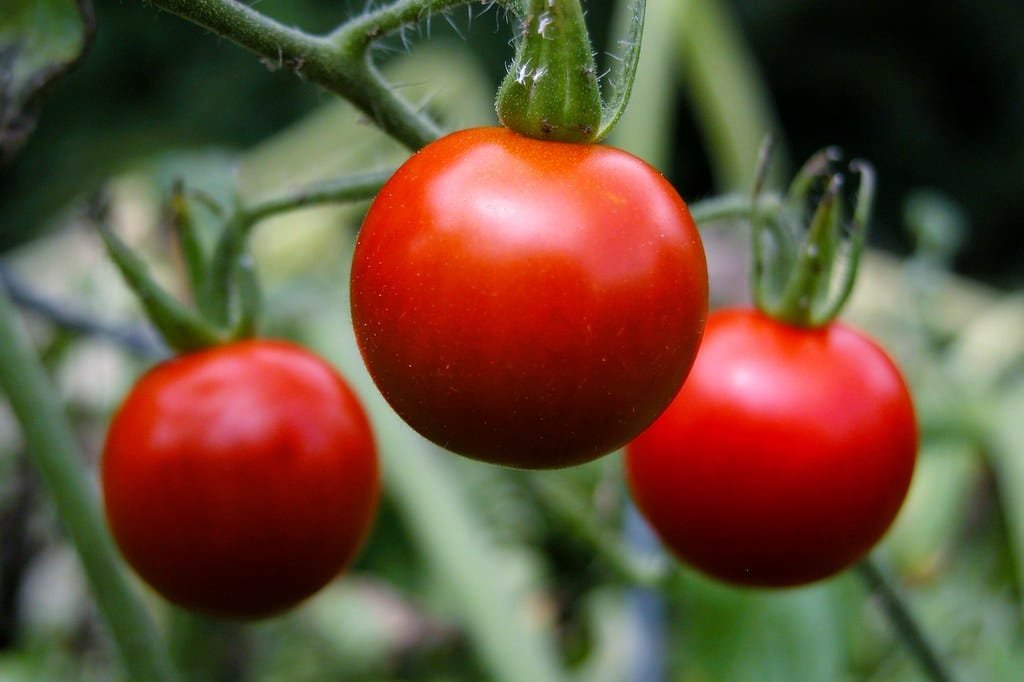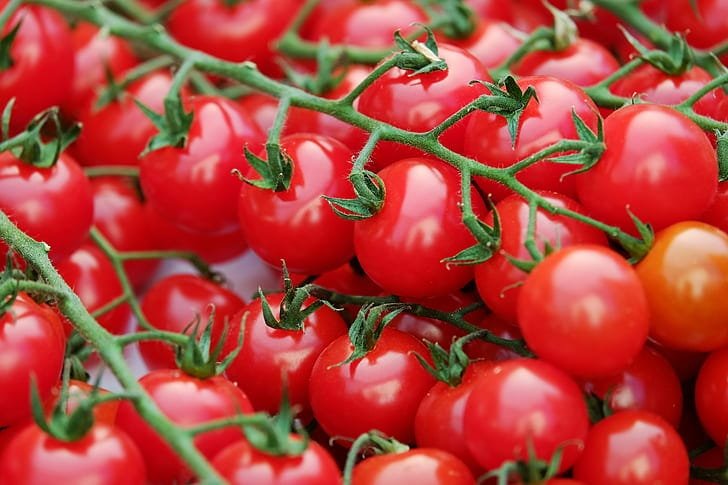Rice farming in Nigeria offers a promising opportunity for anyone looking to tap into the agricultural sector. With a growing demand for rice both locally and internationally, it’s no surprise that many aspiring entrepreneurs are considering rice farming as their next big venture. But the question is: How can you build a successful rice farming business in Nigeria?
Well, it starts with understanding the fundamentals of rice farming, knowing the right steps to take, and being prepared for the challenges ahead. Rice cultivation in Nigeria is not only about planting and harvesting; it requires thoughtful planning, strategic decision-making, and continuous management. Whether you’re looking to start on a small scale or aim for large-scale production, this business can bring impressive returns if done correctly.
I’m going to take you through every step of building a successful rice farming business in Nigeria, from assessing the market demand to making your first sale. Stick with me, and you won’t miss out on crucial insights that will guide you to success. Let’s get into it!
Introduction to Rice Farming in Nigeria: Why is Rice Farming So Important in Nigeria?
Rice is one of Nigeria’s staple foods, and it plays a huge role in the country’s food security. With a rapidly growing population and rising consumption rates, Nigeria’s demand for rice is at an all-time high. According to recent statistics, Nigeria is the second-largest rice producer in Africa, but it still imports a significant amount to meet local demand. This creates an enormous gap in the market and an opportunity for local farmers to step in and fill it.
The economic significance of rice farming in Nigeria is immense. Not only does it create jobs, but it also contributes to the nation’s GDP. From small-scale farming to large agribusinesses, rice farming has become a crucial part of the Nigerian agricultural sector.
Conducting Feasibility Studies: How Do You Know if Rice Farming Will Be Profitable in Nigeria?
Before you start growing rice, it’s crucial to assess whether the market is right for your business. A feasibility study will help you understand the demand, competition, and financials needed to succeed.
- Market Demand and Target Audience: Rice consumption in Nigeria is increasing rapidly. The country’s growing urbanization and rise in disposable incomes have made rice a preferred food choice. You’ll need to analyze local and regional demand for rice, focusing on areas with large populations, such as Lagos, Abuja, or Kano.
- Competitors and Market Dynamics: Research other rice farmers in your area. Understand their pricing, market reach, and strategies. Knowing your competitors’ strengths and weaknesses will help you carve out your own niche.
- Financial Requirements and Profitability: How much will it cost to set up and maintain your rice farm? From land acquisition to equipment, seeds, and fertilizers, you’ll need an accurate estimate of your costs and potential earnings. The average profit margin for rice farming in Nigeria can vary based on location and scale, but with good planning, it can be quite profitable.
Selecting an Appropriate Farming Site: Where Should You Farm Rice in Nigeria?
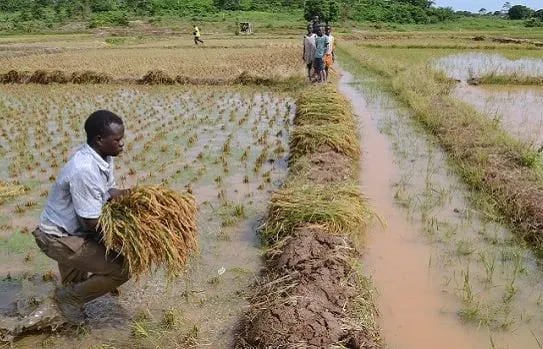
Choosing the right location for your rice farm is one of the most important decisions you’ll make when building a successful rice farming business in Nigeria. The location you pick will directly influence your rice production in terms of yield, cost of operations, and the overall profitability of your farm. Let’s break down what factors to consider when selecting the perfect site for your rice farm.
1. Consider Nigeria’s Rice-Cultivating States
Nigeria is blessed with several states that have conditions ideal for rice farming. These states are located in different ecological zones, each offering unique growing conditions. By selecting the right state and region, you’ll maximize your chances for a successful harvest. Here are some key rice-producing areas:
- Northern Nigeria (e.g., Kebbi, Sokoto, Jigawa, Kano): The semi-arid climate in the north is perfect for rice farming with access to irrigation. Large-scale rice farms in these regions often rely on irrigation systems to supplement rainfall.
- Southern Nigeria (e.g., Anambra, Ogun, Delta, Ebonyi): The southern regions have wetter, tropical climates, ideal for rice cultivation that relies more on rainfall and swampy, low-lying areas. If you are looking to farm rice in swampy fields or flood-prone areas, this region is a good choice.
Make sure the region you choose is well-known for rice farming or has been recognized as having favorable conditions for growing rice.
2. Soil Quality and Fertility
Rice is a water-loving plant, but it also requires soil that retains enough moisture while providing the right nutrients. The quality of your soil can make or break your rice farm, so it’s essential to pay attention to these soil-related factors:
- Soil Texture and Type: Rice grows best in loamy soils that offer a good balance of sand, silt, and clay. Heavy clay soils that hold water well are ideal for rice. Avoid areas with sandy soils that dry out too quickly.
- Water Retention: Ideally, you want to choose land with good water retention capacity. Rice fields, especially during the growing phase, should not dry out easily. If your land does not naturally retain water, you may need to implement irrigation systems.
- Soil Test: Before you start planting, conduct a soil test to check for nutrients, pH levels, and organic matter. This will help you determine if your soil is fertile or if it requires amendments like lime or organic matter to enhance productivity.
3. Water Availability: Irrigation or Rain-fed
Rice farming requires plenty of water, but how you manage water will depend on the geographical location of your farm. You need to assess water availability and choose between:
- Irrigated Farms: If you’re located in an area with limited or irregular rainfall, setting up irrigation systems (like flood or sprinkler systems) will ensure your rice plants get enough water, especially in the dry season. In states like Kebbi or Jigawa, where irrigation farming is common, this could be a viable option.
- Rain-Fed Farms: On the other hand, regions like Anambra or Ogun benefit from abundant rainfall throughout the year, making rain-fed farming a more natural and cost-effective option. Rain-fed rice farming can be more economical, but you must monitor seasonal weather patterns to ensure consistency in crop production.
Consider your farm’s water needs and availability, and choose a system that minimizes risk while optimizing water use.
4. Topography and Field Layout
The layout and topography of the land are just as important as the soil quality. Rice grows best in flat fields with good water flow. Here’s what to look for:
- Flat Terrain: Rice grows best in fields that are relatively flat. The even ground allows for uniform water distribution and prevents waterlogging or dry spots. Look for land that has minimal slopes.
- Field Design: It’s also crucial to consider field layout for managing water flow and drainage. You will need to create bunds (small embankments) around the fields to contain the water. Similarly, you’ll need to design canals for effective irrigation and drainage.
- Swampy Areas: Some rice varieties thrive in swampy or low-lying areas where water naturally accumulates. In regions where these kinds of terrains exist (like the Niger Delta), these areas are ideal for rice cultivation.
5. Climate Conditions: Rainfall, Temperature, and Sunshine
The climate will heavily influence your rice farm’s success, so it’s essential to assess local weather patterns. Rice requires both heat and water to grow, but the balance between them matters:
- Temperature: Rice generally thrives in warm temperatures between 20°C and 35°C. Too much heat or frost can damage crops, so be sure your site has the right temperature range for rice growth.
- Rainfall: Consistent rainfall throughout the growing season is crucial. If you’re in a region where rainfall is erratic, you may need to install irrigation systems to supplement water supply.
- Dry Season Consideration: Rice requires sufficient water during the growing season, especially in the early stages. During the dry season, you must ensure there is still access to water to avoid drought stress.
By understanding your region’s climate and weather patterns, you can better plan for water management and avoid disruptions in your farming operations.
6. Accessibility and Infrastructure
Think about how easy it is to access your rice farm and the infrastructure available to support your operations:
- Road Networks: A good road network is essential for transporting inputs like fertilizers, seeds, and equipment to your farm, as well as moving harvested rice to processing mills or markets.
- Market Access: Consider the proximity of your farm to local rice markets, buyers, or processing mills. This will reduce transportation costs and ensure you can sell your rice quickly once harvested.
- Electricity and Communication: Check if the area has reliable electricity (for irrigation pumps, milling, etc.) and communication services. These can improve your efficiency and allow you to stay connected with suppliers and buyers.
Choosing the right farming site is the foundation of your rice farming business. Whether you’re starting small or scaling up, the location you pick will influence your yield, costs, and profits. Factors like soil quality, water availability, topography, climate, and market access all play critical roles in your farm’s success.
By considering Nigeria’s key rice-producing regions, evaluating soil and water conditions, and ensuring access to necessary infrastructure, you’ll be on your way to building a thriving rice farm. The goal is to ensure that the site you choose maximizes the potential for growth while minimizing risks.
Remember, your location is one of the most important investments you’ll make. Take your time to select wisely—your future rice farm depends on it!
Securing Capital and Funding: How Much Does It Cost to Start a Rice Farm?
Starting a rice farm in Nigeria is a capital-intensive venture, but with the right planning and funding sources, it can be highly rewarding. If you’re asking yourself, “How much does it cost to start a rice farm?” — you’re not alone. Many potential rice farmers find the financial aspect daunting, but with a clear understanding of costs and available funding options, you can secure the capital you need to get started and run your farm successfully.
1. Estimating the Startup and Operational Costs
Before you begin seeking funding, it’s essential to have a clear idea of the costs involved in setting up and running a rice farm. Costs can vary depending on factors like farm size, location, and farming method, but here’s a general breakdown of the key expenses:
- Land Acquisition: The cost of land will vary greatly depending on your location. In some areas of Nigeria, land can be affordable, while in others, it may be more expensive, especially if you’re purchasing in a prime rice-producing zone. You’ll either buy the land outright or lease it, which is a more affordable option for many farmers. Leasing can range from ₦20,000 to ₦150,000 per hectare annually, depending on the area.
- Land Preparation: Preparing the land for rice farming can include costs for clearing, plowing, harrowing, leveling, and setting up irrigation or drainage systems. Expect to spend anywhere from ₦50,000 to ₦200,000 per hectare for land preparation, depending on the scale and type of equipment used.
- Seeds and Planting: The cost of rice seeds varies depending on the variety you choose and where you purchase them. On average, high-quality rice seeds can cost ₦10,000 to ₦15,000 per hectare. However, if you’re opting for premium or hybrid varieties, you might pay more.
- Irrigation Systems (if needed): If your farm is in an area where irrigation is required, you’ll need to install a system that can cost between ₦100,000 and ₦300,000 depending on the scale of your farm and the method of irrigation you choose (e.g., flood or sprinkler systems).
- Fertilizers and Pesticides: Fertilizer and pest control are vital for achieving a good harvest. Fertilizer costs can vary depending on soil tests and the specific nutrients your soil needs. A basic fertilizer application can cost ₦20,000 to ₦50,000 per hectare. Similarly, pesticide costs can range from ₦15,000 to ₦30,000 per hectare.
- Labor Costs: Labor is one of the ongoing costs you’ll incur throughout the farming process. Depending on the scale of your farm, labor costs for planting, tending to crops, harvesting, and processing could be anywhere from ₦50,000 to ₦200,000 per season.
- Harvesting and Post-Harvest Handling: After harvesting, rice needs to be threshed, dried, and stored before it can be sold. The cost of harvesting can vary, but it usually falls between ₦20,000 and ₦100,000 per hectare. The cost of milling (if you plan to mill your rice before selling) and storing rice can also be significant, ranging from ₦50,000 to ₦150,000 per hectare.
2. Total Estimated Startup Costs
In total, the costs for starting a rice farm in Nigeria can range from ₦200,000 to ₦1,000,000 per hectare, depending on your specific requirements and the size of your farm. The figures above are rough estimates, and your actual costs will depend on factors like location, farm size, and your chosen farming method.
Here’s a simple breakdown for a 1-hectare rice farm:
| Expense Category | Estimated Cost (₦) |
| Land Acquisition (Leasing) | 20,000 – 150,000 |
| Land Preparation | 50,000 – 200,000 |
| Rice Seeds | 10,000 – 15,000 |
| Irrigation Systems (Optional) | 100,000 – 300,000 |
| Fertilizers and Pesticides | 20,000 – 50,000 |
| Labor | 50,000 – 200,000 |
| Harvesting and Post-Harvest Handling | 50,000 – 150,000 |
| Total Estimated Cost | 200,000 – 1,000,000 |
3. Funding Options: How Can You Secure the Capital?
Once you have a clear idea of your startup and operational costs, the next step is to secure funding for your rice farming business. Fortunately, there are various avenues you can explore to raise the capital needed.
a. Personal Savings
If you have savings set aside for investments, using your own funds can be the easiest and least stressful way to finance your rice farming venture. However, be sure to only use what you’re comfortable with and avoid putting all your personal finances at risk.
b. Partnerships and Joint Ventures
Forming a partnership with an experienced farmer or an agricultural investor can be a great way to share the costs and risks involved in rice farming. You can contribute your knowledge, while your partner brings in the capital (or vice versa). This can help reduce financial pressure and increase the chances of success.
c. Bank Loans
Most Nigerian banks offer loans to farmers for agricultural businesses. However, securing a loan can be challenging due to the stringent requirements and interest rates. Prepare a solid business plan to present to the bank, highlighting your understanding of the business, your target market, and a detailed financial projection. Interest rates on agricultural loans in Nigeria can range from 10% to 20%.
d. Government Grants and Subsidies
The Nigerian government, along with international organizations, offers various grants, subsidies, and programs designed to support agriculture. Programs such as the Central Bank of Nigeria’s Anchor Borrowers’ Program (ABP) provide low-interest loans and grants to rice farmers. Research government programs in your region that could offer financial assistance for your rice farming business.
e. Angel Investors and Venture Capitalists
If you’re looking for more substantial funding and you have a clear vision for scaling up your business, you may want to consider seeking angel investors or venture capitalists. These investors are often looking for high-return opportunities in agriculture and may be willing to fund your rice farm in exchange for equity or repayment with interest. Prepare a compelling business plan to attract these investors.
f. Crowdfunding
Crowdfunding is another option that has gained popularity in recent years. You can raise capital by appealing to a wide audience online through platforms like GoFundMe or Kickstarter. Share your story, your goals, and why people should support your rice farming business. While this method may take more time to gain traction, it’s a great way to generate interest and secure small amounts of funding from a large number of backers.
4. Developing a Business Plan to Attract Investors
A strong business plan is essential for attracting investors, securing loans, or even for your own reference as you move forward with your rice farming venture. Your business plan should include:
- Executive Summary: A concise overview of your rice farming business, including your goals and objectives.
- Market Research: Data on the demand for rice in your target market, pricing, and competition.
- Production Plan: Detailed steps on how you will produce, harvest, and process your rice.
- Financial Plan: A breakdown of your startup and operational costs, expected revenue, and profitability.
- Risk Analysis: Identify potential challenges (e.g., weather, pests) and how you will mitigate them.
Starting a rice farm in Nigeria may require significant investment, but with careful planning and access to funding options, it is absolutely achievable. By accurately estimating startup costs, exploring funding sources like personal savings, partnerships, loans, or grants, and developing a solid business plan, you can secure the capital needed to launch your rice farming business.
With the right financing and a clear strategy, you’ll be on your way to cultivating a successful rice farming business in Nigeria—one that meets the growing demand for locally grown rice and contributes to the country’s agricultural sector. Don’t let the financial aspect discourage you—there are many opportunities out there to help you make your dream a reality.
Land Preparation – What Does It Take to Get the Land Ready for Rice Farming?
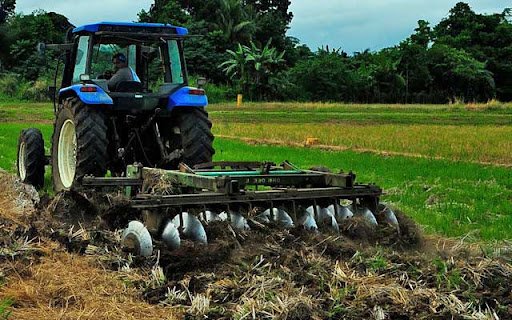
Land preparation is a crucial step in rice farming. If done improperly, it can hinder your crops’ growth and reduce your yield. Here’s how to prepare:
- Clearing the Land: The first thing you need to do is clear the land of bushes, weeds, and any other obstacles. This will make ploughing and planting easier.
- Ploughing and Harrowing: Once the land is clear, you’ll need to plough to loosen the soil. This helps with root penetration and water retention. Harrowing follows to smoothen the soil.
- Leveling the Field: Ensuring the land is level is important for uniform water distribution during the growing process. Uneven fields can lead to poor irrigation and waterlogging.
- Bunds and Canals: Create bunds (dikes) around the field to manage water flow. You can also set up canals for irrigation or drainage.
Selecting Suitable Rice Varieties: What Type of Rice Should You Grow?

Choosing the right rice variety is a critical decision that can significantly affect the success of your rice farming business in Nigeria. Not all rice varieties are the same—some perform better in certain climates, soils, and growing conditions. Whether you’re a beginner or looking to expand your current farm, it’s important to select the best rice varieties that align with your goals, the local environment, and market demands.
Here’s how to go about selecting the right rice varieties for your farm:
1. Understand the Different Types of Rice
There are many types of rice grown worldwide, but in Nigeria, two main categories dominate:
- Indica Rice: This type of rice is long-grained, has a dry texture when cooked, and is commonly used in Nigerian dishes like jollof rice and fried rice. It grows well in areas with sufficient water and can be grown in a variety of soil types.
- Japonica Rice: Japonica is shorter grain rice, sticky when cooked, and often used in porridge or other meals requiring soft rice. However, it has a lower yield compared to Indica varieties and may require more careful attention to soil and irrigation management.
While Indica rice is more commonly grown due to its higher yield and preference in local markets, the choice between Indica and Japonica should depend on your specific needs, climate, and target market.
2. Consider the Ecological Zones of Nigeria
Rice farming in Nigeria varies greatly depending on the ecological zone. The country’s climatic conditions influence how well different varieties of rice will grow. Here are a few factors to consider:
- Northern Nigeria: The semi-arid climate of the north makes it ideal for drought-tolerant rice varieties, particularly those suited for irrigation-based systems. Some varieties that thrive in the north include Nerica (New Rice for Africa), which is known for its resilience to drought and pests.
- Southern Nigeria: The wetter, tropical climate of the southern states like Anambra and Ogun makes it suitable for rice varieties that require more water. Varieties like L-19 and FARO 44 perform well in swampy areas and flood-prone fields.
Consider the rainfall, soil type, and general weather patterns in your area to choose varieties that are adapted to local conditions.
3. Evaluate the Yield Potential and Disease Resistance
The yield potential of a rice variety is one of the most important factors to consider. High-yielding rice varieties can increase your overall productivity and profitability. Look for varieties with a good track record of high yield, especially in your local growing conditions.
- Disease Resistance: Rice farms can be vulnerable to various diseases and pests, such as rice blast, brown spot, and stem borers. It’s important to choose rice varieties that are resistant to common local diseases. For example, FARO 44 is known for its resistance to rice blast, one of the most damaging diseases in rice farming.
Choosing a variety with high disease resistance will reduce the amount of time, labor, and money spent on pest control and treatment.
4. Market Preferences and Consumer Demand
The market demand plays a significant role in determining the rice variety to grow. Understanding consumer preferences in your target market will help you choose varieties that are in high demand. Some questions to consider include:
- Grain Quality: Does your target market prefer long, medium, or short-grain rice? Long-grain rice varieties, like L-19 and FARO 44, are often preferred by Nigerian consumers.
- Price Point: Some varieties might have a higher market value due to their taste, texture, or processing ease. However, consider the costs involved in producing and milling these varieties. More exotic or premium varieties may require more investment in processing but could yield higher returns.
- Post-Harvest Handling: Some rice varieties are easier to process and store than others. Choosing varieties that are less prone to breakage during milling or easier to dry can reduce post-harvest losses.
5. Climate Adaptability and Growing Season
The climate in your farming region will significantly influence how well your rice grows. Some rice varieties are more adaptable to specific climates and growing seasons, so it’s essential to choose varieties that are suited to the length and conditions of your growing season.
- Drought-Tolerant Varieties: In areas where water availability might be a concern, look for varieties that are drought-tolerant, like Nerica rice, which thrives even with reduced water.
- Rain-Fed Systems: If you plan to rely on natural rainfall, choose varieties that are suited for rain-fed systems, such as FARO 44. These varieties are adapted to handle the fluctuations in water availability that come with rainfall patterns.
By selecting varieties that are suited to your specific growing season and climate conditions, you ensure that your rice farm is more likely to thrive, even in less-than-ideal weather conditions.
Seed Preparation and Planting: How Do You Ensure Healthy Rice Crops?
Once you’ve selected the right rice variety, it’s time to focus on seed preparation and planting. The success of your rice farm depends heavily on starting with the best seeds and planting them correctly.
- Procure High-Quality Seeds: Make sure you source your seeds from reputable suppliers or agricultural extension programs. Using certified, disease-free seeds is essential for a healthy crop.
- Pre-Germinate Your Seeds: To speed up the germination process, you can pre-germinate seeds before planting. This means soaking them in water for about 24-48 hours until they start to sprout.
- Direct Seeding vs. Transplanting: You can choose to sow seeds directly in the field (direct seeding) or transplant seedlings from a nursery. Direct seeding is often easier and cheaper, while transplanting can lead to better yields in some situations.
- Proper Planting Depth and Spacing: Rice plants need plenty of room to grow. Ensure you plant seeds or seedlings at the right depth and space them properly to reduce overcrowding and improve air circulation.
Water Management – How Do You Manage Water for Optimal Rice Growth?
Rice is a water-intensive crop, and one of the key factors to successful rice farming in Nigeria is managing water efficiently. Too much or too little water can affect your crop yields, so it’s crucial to get it right.
- Maintaining Adequate Water Levels: Rice grows best in flooded fields, which means you’ll need to ensure your field is adequately flooded throughout the growing season. Keep water levels around 4-6 inches during the vegetative stages, adjusting as necessary during the reproductive stages.
- Irrigation Systems vs. Rainfall: In regions where rainfall is inconsistent, an irrigation system will be essential. You can invest in canal-based, drip, or sprinkler irrigation systems, depending on your budget and land size.
- Proper Drainage: It’s just as important to prevent waterlogging. Install proper drainage systems to remove excess water during periods of heavy rainfall or to manage irrigation effectively.
Fertilizer Application – How Can Fertilizers Help Boost Your Rice Yield?
Rice, like any other crop, requires specific nutrients to grow. Fertilizer application is essential for ensuring your rice plants receive the necessary nutrients for optimal growth.
- Conduct Soil Tests: Before applying fertilizers, it’s wise to conduct soil tests. This helps identify nutrient deficiencies and ensures that you apply the correct type and amount of fertilizer.
- Use Fertilizers According to Soil Needs: Based on your soil test results, apply fertilizers that address any deficiencies in nitrogen, phosphorus, potassium, and other essential nutrients.
- Timing of Fertilizer Application: Timing is crucial. Apply fertilizers in stages, with the most important being at planting, mid-season, and before flowering. Timing applications to the rice plant’s growth stages will maximize nutrient uptake and boost yields.
Weed, Pest, and Disease Management – How Can You Protect Your Rice Farm from Weeds, Pests, and Diseases?
Rice farms are vulnerable to various pests, diseases, and weeds. Managing these threats effectively can prevent crop loss and increase your overall yield.
- Integrated Weed Management: Weeds compete with rice for nutrients, water, and light. Use a combination of manual weeding, herbicides, and crop rotation to manage weeds effectively.
- Monitor for Pests and Diseases: Some common rice pests in Nigeria include rice weevils, stem borers, and rice bugs. Look out for signs of pest infestation and take action immediately. Diseases such as rice blast and brown spot can also damage crops, so monitor closely.
- Control Measures: You can control pests and diseases through chemical treatments, such as pesticides, or through biological control methods, like introducing natural predators. Always follow recommended guidelines to avoid damaging the environment or harming beneficial insects.
Harvesting and Post-Harvest Handling – When Should You Harvest Your Rice, and How Do You Handle It?
Timing your harvest and handling the rice properly afterward are critical steps in ensuring that your rice is of high quality and free from contamination.
- Determining the Optimal Harvest Time: Harvesting too early or too late can affect your yield. The best time to harvest is when the grains are fully matured, and about 80% of the grains are golden in color. The plants should also have a dry feel to them.
- Harvesting Techniques: Use a sickle or harvesting machine to cut the rice stalks, but handle the crop gently to avoid damaging the grains. Try to harvest on a dry day to reduce the risk of fungal growth.
- Processing, Threshing, and Drying: After harvesting, thresh the rice to separate the grains from the stalks. Dry the rice thoroughly under the sun or use a mechanical dryer. Rice should be dried to a moisture content of around 14% before milling to avoid spoilage.
- Milling and Storing Rice: Once dried, rice can be milled and stored. You can either mill the rice yourself or sell it to a rice miller. For storage, ensure that the rice is kept in a cool, dry place to avoid mold growth.
Marketing and Distribution – How Do You Sell Your Rice and Find Buyers?
Now that you’ve grown and processed your rice, the next step is selling it. The marketing and distribution phase is just as important as farming itself.
- Develop a Marketing Strategy: Create a clear marketing strategy that identifies your target market—whether it’s local consumers, retailers, or wholesalers. Establish pricing that covers your costs and generates a reasonable profit.
- Build Relationships with Buyers: Approach wholesalers, retailers, and local markets to create strong relationships with potential buyers. Building trust and understanding market needs will help you grow your business.
- Branding and Packaging: Think about branding your rice. Well-packaged rice with your farm’s name and logo could give your product an edge in the market. Packaging in smaller quantities for consumers or in bulk for wholesalers can also help expand your market reach.
Financial Management and Record-Keeping – How Do You Keep Track of Your Farm’s Financials?
Managing finances and keeping accurate records is crucial for the long-term success of your rice farming business. Financial mismanagement can quickly turn a profitable venture into a loss-making one.
- Accounting Systems: Set up an accounting system to track your expenses, sales, and profits. Using accounting software can make the process much easier and more efficient.
- Review Financial Performance Regularly: Regularly review your income statements, balance sheets, and cash flow to ensure your business is on track. This will also help you make informed decisions about expansion or investments.
- Plan for Reinvestment and Expansion: As your rice farm grows, consider reinvesting profits into expanding your land, purchasing better equipment, or improving farming techniques. Constant growth will ensure that your rice farming business remains competitive and sustainable in the long term.
Continuous Learning and Adaptation – How Do You Keep Improving Your Rice Farming Business?
The agricultural industry is always evolving, and staying ahead of trends can give your rice farming business an edge over competitors.
- Stay Updated on New Techniques and Technologies: Rice farming techniques are constantly improving. Keep up-to-date with the latest advancements in rice farming, from pest control methods to new irrigation technologies.
- Participate in Training Programs: Attend agricultural workshops and training programs to improve your skills and learn new practices that could increase your productivity.
- Network with Other Farmers and Experts: Networking with fellow rice farmers and industry professionals will give you access to valuable knowledge and support that can help you grow your business.
Conclusion
Building a successful rice farming business in Nigeria is no easy task, but it’s definitely achievable with the right knowledge, resources, and mindset. With careful planning, dedication, and persistence, you can create a thriving rice farm that meets the increasing demand for rice in the country and even opens doors to export opportunities.
Starting a rice farm is an investment that requires time, effort, and careful management. By following the steps outlined in this article, you’ll be well on your way to establishing a profitable and sustainable rice farming business. So, are you ready to take the plunge and build your own rice farm in Nigeria? Let’s make it happen!
FAQs – How to Build a Successful Rice Farming Business in Nigeria
How much does it cost to start a rice farm in Nigeria?
The cost to start a rice farm in Nigeria varies based on factors like the size of your farm, location, and farming methods. On average, starting a 1-hectare rice farm can cost anywhere from ₦200,000 to ₦1,000,000. This includes expenses for land acquisition or leasing, land preparation, seeds, fertilizers, irrigation systems, labor, and post-harvest processing. Costs will fluctuate based on whether you’re leasing or purchasing land and the scale of your farm.
How to become a successful rice farmer?
To become a successful rice farmer in Nigeria, you need to focus on the following:
- Understand rice farming: Study the best practices and farming techniques for rice cultivation, including land preparation, seed selection, pest management, and irrigation.
- Conduct market research: Know your target market, understand demand, and stay informed about market trends.
- Secure funding: Have a solid business plan and explore funding options such as personal savings, loans, or government grants.
- Focus on quality: Invest in high-quality seeds, fertilizers, and efficient farming methods to ensure good yields.
- Practice effective marketing: Develop a solid marketing plan to sell your rice and build strong relationships with distributors or consumers.
What is the best fertilizer for rice farming in Nigeria?
The best fertilizer for rice farming in Nigeria largely depends on your soil’s nutrient profile. A balanced fertilizer with nitrogen, phosphorus, and potassium (NPK) is generally recommended. Specifically, NPK 15-15-15 is widely used during planting, while urea (46% nitrogen) is used to boost growth during the rice plant’s vegetative stages. Always conduct a soil test before applying fertilizers to ensure you’re addressing any specific deficiencies.
How many bags of rice can a plot of land produce?
The yield of rice per plot of land depends on several factors, such as land quality, rice variety, and farming techniques. On average, a 1-hectare farm can produce between 40 to 70 bags of rice (each bag weighing 50kg). However, if you use modern farming practices and manage the land efficiently, you could produce up to 100 bags per hectare.
Which state in Nigeria has the best rice farming?
Several states in Nigeria are known for their successful rice farming due to favorable ecological zones. The states with the best rice farming include:
- Kano and Jigawa in the North, known for large-scale commercial rice farms.
- Benue and Niger in the Middle Belt, with fertile land and suitable climates for rice production.
- Anambra and Ebonyi in the Southeast, with small-scale rice farms growing steadily.
However, Ebonyi State is regarded as one of the best states for rice farming due to its favorable soil, irrigation systems, and high yield.
Which type of land is good for rice?
Rice grows best in flooded or swampy areas where water is abundant. Ideally, the soil should have good water retention capabilities, and the land should be flat or gently sloping to allow proper water flow. Clayey or silty soils with excellent moisture-holding capacity are considered ideal for rice farming. These soil types allow for controlled irrigation, helping the rice plants grow efficiently.
Is selling rice profitable in Nigeria?
Yes, selling rice in Nigeria can be profitable, especially with the growing demand for locally produced rice. While the initial investment can be high, once your farm is up and running, rice farming can yield good profits. The Nigerian government has been supporting rice production, and consumers are increasingly favoring locally grown rice over imported varieties. By focusing on quality production and strategic marketing, rice farming can be a highly profitable business.
Who is the target market of the rice business?
The target market for the rice business in Nigeria includes:
- Consumers (households): As rice is a staple food, households are the primary consumers.
- Retailers and wholesalers: Local markets, grocery stores, and supermarkets are key distribution channels for rice.
- Rice processors: Some rice farmers sell their unprocessed rice to local mills or processing plants for further processing and packaging.
- Exporters: As demand for Nigerian rice grows, exporting to neighboring West African countries is becoming a viable option.
By identifying your market early and understanding consumer preferences, you can successfully position your rice business for success.
